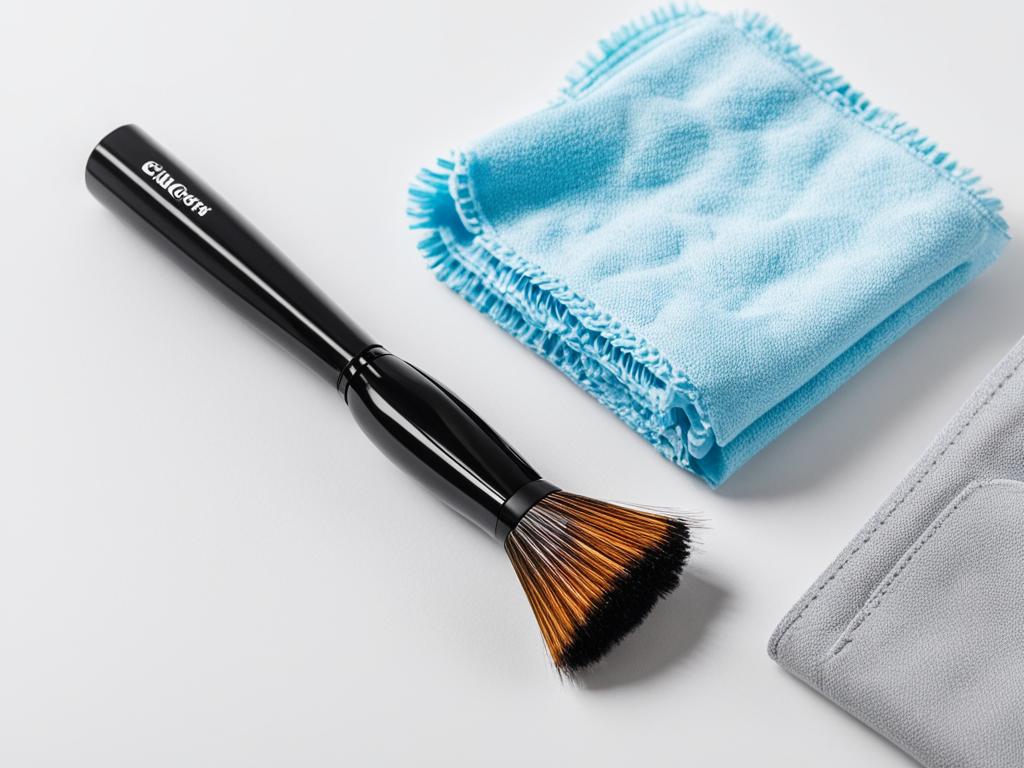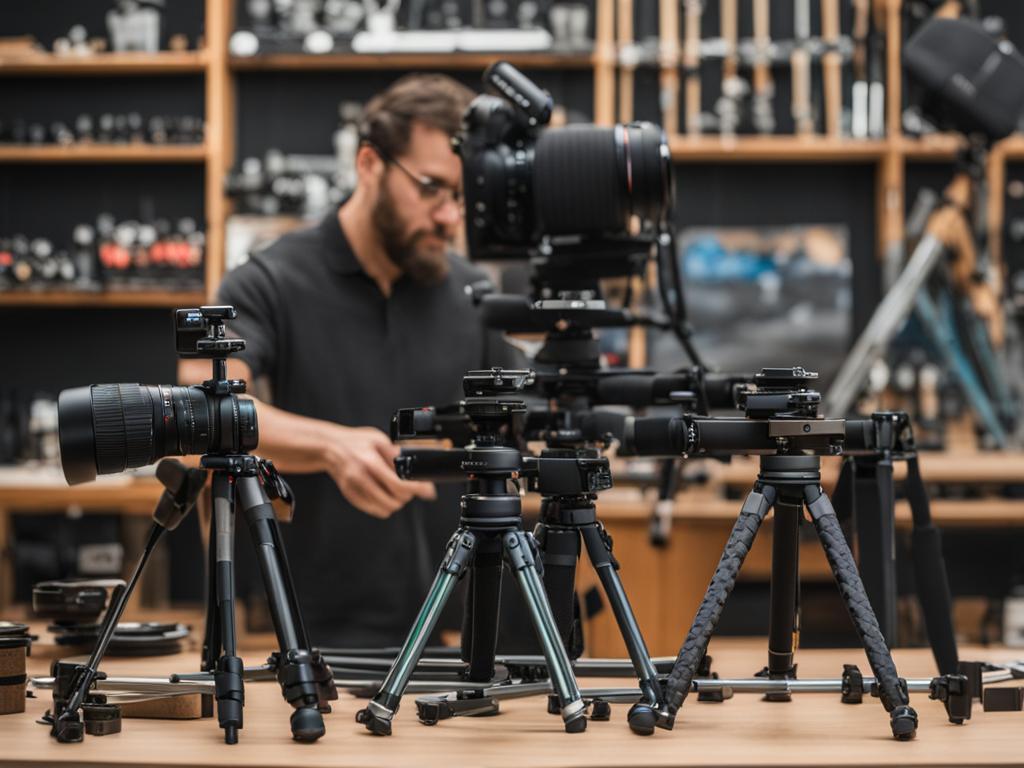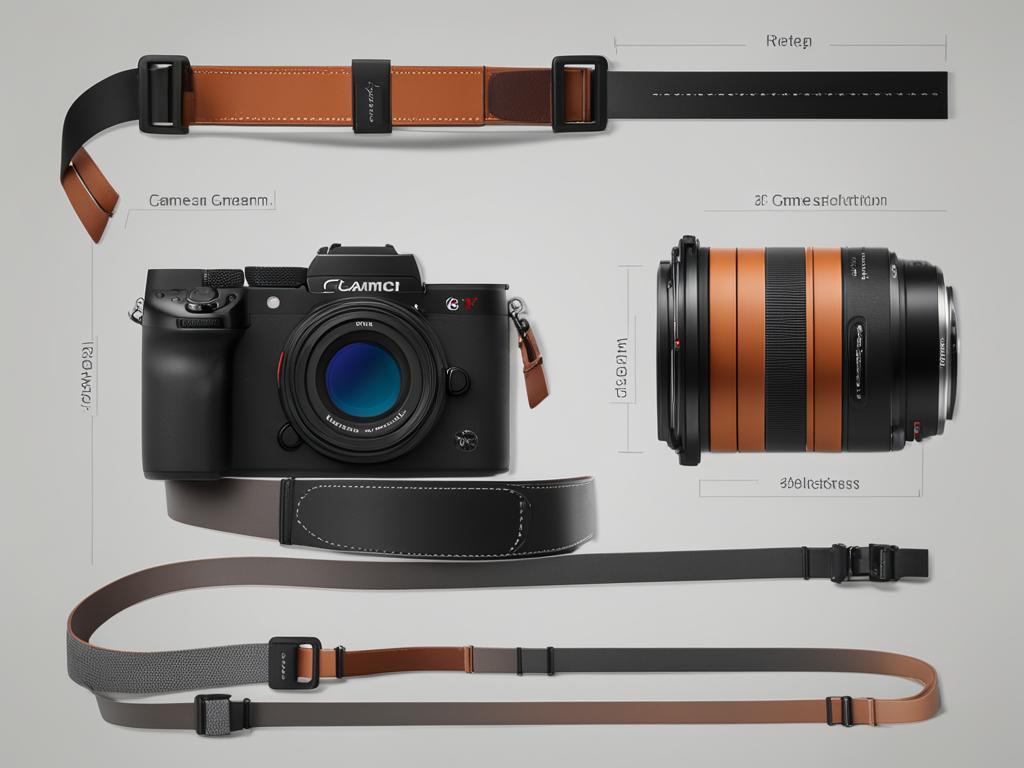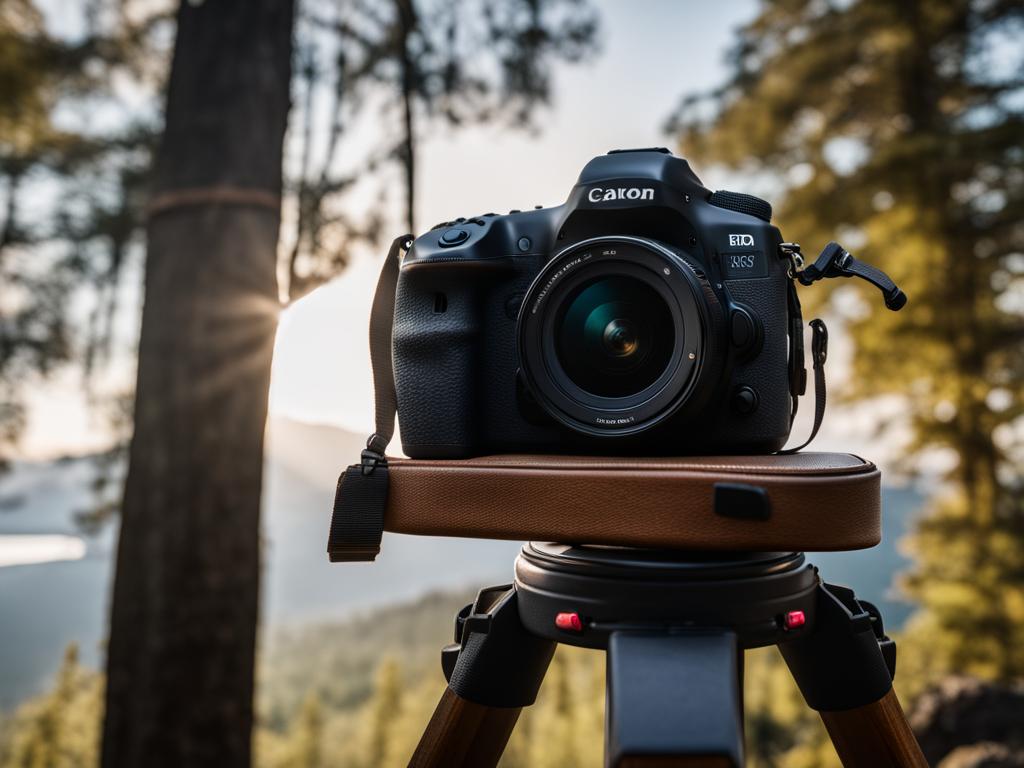Throughout my journey as a photographer, I’ve often crossed paths with the lure of Gear Acquisition Syndrome. Yet, what has consistently stood the test of both time and experience is not the quantity of camera gear, but the value each piece brings to the table. In this vein, I’ve curated a distinct collection of camera accessories that uphold the essence of photography gear, irrespective of the brand. These accessories are not just add-ons; they are pivotal tools that ensure precision, efficiency, and the uncompromised quality of the photographs we capture. From the indispensable lens cleaning kit to the trusty tripod, each piece of camera equipment has earned its place in my kit through relentless practical application and notable enhancement of the photographic process.
Key Takeaways
- Identifying essential camera gear can refine your photography without leading to clutter.
- Choosing camera equipment should center on its practicality and contribution to your workflow.
- Camera accessories like tripods and memory cards are universally valuable, no matter your niche.
- A select repertoire of gear provides a balanced approach to resourcefulness and artistic expression.
- Investments in photography gear should prioritize protection, ease of use, and the enhancement of image quality.
Unlocking the Secrets to Pristine Shots: Lens Cleaning Kits
As a photographer who values the clarity and quality of my work, I cannot stress enough the importance of a lens cleaning kit in your camera maintenance routine. A kit is not just a tool; it’s an insurance policy against the dust and grime that can mar your photos. For anyone serious about their craft, incorporating the use of a micro-fiber cloth and other cleaning supplies into their workflow is essential to ensure each captured image reflects their true vision.

Maintaining a spotless lens significantly contributes to the performance and longevity of your camera gear. My own routine includes regular cleaning sessions, which have become as habitual as charging my batteries. Moreover, a clean lens can often mean the difference between an average image and a stellar one, especially when swapping lenses in the field where the risk of contamination is highest.
- Micro-fiber cloths to delicately remove fingerprints and oil without leaving scratches
- An air blower to dislodge dust without direct contact
- Lens cleaning solution for stubborn residue
- LensPen or similar tools for precision cleaning
When it comes to camera gear, cumulative care leads to better results. Thus, investing in a diverse lens cleaning kit is a sensible decision for both amateur and professional photographers alike. Below is a comparison of what a typical lens cleaning kit might contain:
| Component | Use | Frequency of Use |
|---|---|---|
| Micro-fiber cloth | Removing smudges and dust | Daily |
| Air blower | Dislodging internal dust particles | As needed |
| Lens cleaning solution | Cleaning stubborn residue | Weekly/As needed |
| LensPen | Precision cleaning for lenses and sensors | Sporadically/As needed |
Never underestimate the power of a pristine lens, and always be equipped with the tools necessary to maintain it. It’s not merely about keeping your gear in presentable condition; it’s about respecting the art form and ensuring that every snapshot is as clear as your artistic vision. Remember that while regular cleaning is indispensable, it’s not a substitute for professional maintenance—consider it a complement to it.
Navigating the World of Memory Cards
As a dedicated photographer, I’ve come to understand that memory cards are the unsung heroes of photography gear. They are the unassuming but vital components that store our most precious moments and accomplishments. To ensure an uninterrupted creative process, especially when employing features like burst mode, one must carefully consider the type and specs of their camera storage.
Selecting the Right Format and Speed
Choosing the right memory card involves more than just picking the one with the most storage. Speed is critical, particularly when working with high-resolution images or when using burst mode to capture rapid sequences. Cameras write data to the card, and if this process lags, so too does your shoot—missing decisive moments is not an option for professionals. The format too plays a role; while SD cards are ubiquitous, others such as CFast or XQD might be necessitated by specialized photography gear.
Understanding Storage Capacity for Different Photography Styles
Different genres of photography demand diverse storage capacities. Take for instance, event photography or wildlife shoots where the action is continuous; a memory card with generous capacity allows for longer shoots without the need for swaps. Conversely, a less capacious card may suffice for studio work, where the pace is more controlled and each shot is meticulously planned. Hence, aligning the card’s specifications with your shooting style is not a mere technicality—it’s a practical strategy for efficient workflow management.
- For high-speed photography or video, look for cards with a V-rating (V60/V90) indicating guaranteed write speeds essential for continuous shooting and 4K video recording.
- When working in harsh conditions, consider durability—cards resistant to water, shock, and x-rays provide additional protection for your priceless data.
- Compatibility is key; always verify that the card you choose works seamlessly with your specific camera model to avoid technical glitches.
Indeed, while the selection of memory cards might seem like a mundane step in the grandeur of capturing images, it is a foundation upon which the reliability and success of a photographer’s work is built. Respect this facet of your photography gear, and it will serve you unerringly in your quest to freeze time in its most eloquent form.
The Essential Camera Accessories: Tripods for Stability and Precision
As a photographer who values precision and clarity, I consider camera tripods to be among the vital camera stabilization accessories. They are indispensable for long exposures and low-light photography, where keeping the camera steady is non-negotiable. Let’s delve into the features that make tripods a cornerstone for capturing exemplary shots.

A good tripod provides a stable platform for all types of photography sessions. For landscapes and cityscapes that require long exposures, tripods are the backbone that ensure sharp images without the blur caused by hand-held camera shake. In the realm of low-light photography, where exposure times are extended, a tripod is similarly crucial.
However, the best tripod for your photography greatly depends on your specific shooting conditions and personal style. When considering a tripod, reflect on the material and head type. Camera tripods with a versatile ball head offer flexibility and ease of movement, while those with a pan and tilt head afford greater control over each axis of movement, ideal for achieving precision in your compositions.
Here’s a comparison of different tripod types that can enhance your photography:
| Type | Material | Head Type | Suitability |
|---|---|---|---|
| Travel Tripod | Carbon Fiber | Ball Head | Outdoor, Travel, Hiking |
| Studio Tripod | Aluminum | Pan and Tilt Head | Studio, Portrait, Product |
| Compact Tripod | Basalt Fiber | Ball Head | Street, Casual, Indoor |
Keep in mind the weight and portability if you frequently travel for shoots. A lightweight carbon fiber tripod can be the best friend for photographers on the move, combining strength and portability. For those who primarily capture food or product photographs in a studio, heavier, more stable aluminum tripods could be the go-to choice.
A tripod is more than an accessory; it’s a facilitator of creative freedom and photographic excellence.
My own experiences have taught me that investing in the right tripod, which matches both the technical demands of the shoot and the physical constraints of the environment, greatly elevates the quality of work produced. Camera tripods are the unsung heroes in achieving camera stabilization, acting as the foundation upon which you can build your shots with confidence, regardless of the conditions.
How Camera Straps Can Enhance Your Shooting Experience
As a photographer who spends hours with a camera in hand, I’ve found that camera straps are more than just a convenience—they are an extension of my photography gear. The default neck strap that typically comes with a new camera may suffice for the amateur, but for the professional who needs quick access and comfort throughout long shoots, exploring options like sling straps and cross-body straps can substantially improve the shooting experience.
Take for instance the sling strap; it’s designed to allow the camera to slide quickly from rest to shooting position, which has been invaluable to me during events where timing is crucial. Alternatively, cross-body straps facilitate an even weight distribution that not only offers comfort, but also keeps my camera secure yet ready at a moment’s notice, a quintessential need during dynamic shooting scenarios such as weddings or street photography.
Moreover, these straps aren’t just functional; they embody the style and personality of the photographer. Brands like Peak Design and BlackRapid have effectively merged aesthetics with practicality, creating straps that photographers proudly wear. Below is a table comparing various camera strap types and their key benefits:
| Type of Strap | Weight Distribution | Accessibility | Recomended Use |
|---|---|---|---|
| Neck Strap | Average | Low | Casual Shooting, Light Cameras |
| Sling Strap | Good | High | Event Photography, Quick Access |
| Cross-Body Strap | Excellent | High | Wedding, Travel, Street Photography |
| Wrist/Hand Strap | N/A | Medium | Mirrorless Systems, Light Cameras |
For those carrying lighter gear or employing mirrorless systems, a wrist or hand strap offers an unobtrusive alternative that provides security without the weight on your neck or shoulders. These subsidiary straps ensure my camera is always at hand’s reach without the encumbrance of a larger strap—and this can make all the difference when aiming to capture those fleeting, spontaneous moments.
Investing in a quality camera strap is not only a matter of comfort, but it is also essential for maintaining the readiness and safety of your gear while on the move.

In conclusion, choosing the right camera strap will significantly impact your effectiveness as a photographer. It’s not just about carrying your camera; it’s about blending functionality, comfort, and style into your photography practice—enhancing your shooting experience with every click of the shutter.
Protective Camera Gear: Necessity Meets Style
As someone who treasures their camera equipment, I understand that protection and style are not mutually exclusive. Whether I’m navigating through the congested streets of New York for a photoshoot or hiking the rocky terrains of the Rockies, my gear’s safety is always a priority. High-quality camera bags and protective wraps have become staples in my photography kit for this very reason.

Choosing the Perfect Camera Bag for Your Gear
My selection process for camera bags focuses on combining optimal camera gear protection with convenience and aesthetics. Each kind of bag has its unique benefits, depending on the photography scenario. For extended treks, backpacks distribute the weight evenly; shoulder bags provide quick access for those candid street shots; and messenger bags strike a perfect balance between the two. But the hunt for the perfect bag doesn’t stop at style—it must ensure camera equipment safety above all.
The Versatility of Protective Wraps
When a traditional camera bag is not within reach or my assignment requires a less conspicuous approach, I turn to protective wraps. These ingenious accessories offer a layer of padded defense against the inevitable jostle and jumble of gear. They are exceptionally great for photographers who prefer the minimalist approach or when I must pack my camera into a non-photography specialized bag.
| Camera Bag Type | Pros | Cons | Best Use Case |
|---|---|---|---|
| Backpack | Even weight distribution, spacious | Can be bulky, access to gear can be slower | Travel, Hiking, All-day events |
| Shoulder Bag | Quick access to gear, compact | Holding weight on one shoulder can be uncomfortable | Street, Documentary, Event Photography |
| Messenger Bag | Stylish, faster access than backpack | Less capacity than backpacks | Day trips, Casual outings with limited gear |
| Protective Wraps | Compact, customizable fit, added layer of protection | Less structural protection compared to bags | Storage in non-camera bags, Discreet transport |
My experience dictates that the key to optimal camera gear protection lies in carefully choosing accessories that cater to my specific needs, ensuring that my camera remains unscathed and ready to capture the world’s visual wonders.
The Critical Role of Camera Filters in Photography
In my journey through various photography landscapes, I’ve found that wielding the right camera filters is akin to a painter choosing the perfect brush. They are not mere add-ons but powerful tools for realizing a vision. Take the polarizing filter, for example, which to me is indispensable when shooting expansive skies and reflective surfaces. By deepening the blues of the sky and cutting out glare, I can capture the true essence of the great outdoors. It’s a staple for any landscape photographer aiming to transform a simple image into a captivating one.
Although UV filters had their heyday in film photography, serving as guardians against the sun’s haze, they now offer a shield for my lenses against the everyday adversaries of dust and scratches, without affecting my digital captures. The sheer practicality these filters bring to photography gear protection cannot be overstated. However, it is the Neutral Density (ND) filter that truly unlocks new realms of creativity. By diminishing the volume of light entering the lens, ND filters allow me to experiment with prolonged exposure times, even under the midday sun, to create ethereal and dynamic imagery.
Choosing the right camera filters isn’t just about enhancing images; it’s also about safeguarding the costly investments we make in our lenses. Whether it’s through the use of a polarizing, ND, or UV filter, the impact on your photography can be profound. As an integral component of photography gear, they provide the control and protection I need to produce exceptional work consistently. My advice is to carefully consider the specific needs of your photography niche when selecting filters, as they can make all the difference in capturing your envisioned shots.
FAQ
What are the top essential accessories that every photographer should have?
Every photographer should consider having a sturdy camera tripod for stability, a reliable lens cleaning kit for maintenance, sufficient memory cards for storage, ergonomic camera straps for comfort, protective camera bags or wraps, and essential camera filters like polarizing, ND, and UV filters to enhance image quality.
How often should I clean my camera lens and what should I use?
Lens cleaning should be done as needed, typically when you notice smudges, dust, or fingerprints. Always use a micro-fiber cloth to avoid scratches and consider a LensPen or air blower for removing dust particles, especially when changing lenses frequently.
Why are memory card speed and capacity important in photography?
Memory card speed and capacity are critical as they affect the camera’s ability to record images quickly and for how long. For example, burst mode photography often requires faster and higher capacity cards to keep up with the rapid shooting without running out of space.
What considerations should I keep in mind when choosing a camera tripod?
When selecting a camera tripod, consider the weight it needs to support, the environments in which you’ll use it, its material and sturdiness, and the head type—whether you need the versatility of a ball head or the precision of a pan and tilt head.
Can a camera strap really improve my photography experience?
Absolutely. A good camera strap that fits your body and shooting style can distribute the weight of the camera more evenly, reducing fatigue. It also keeps the camera accessible, allows for quick movement, and can help prevent accidental drops, making it essential for a smoother shooting experience.
How do I choose the right camera bag?
When choosing a camera bag, look for one that fits your gear snugly without excess space, provides easy access to your equipment, and offers ample protection against impact and weather. Your bag should also be comfortable to carry for long periods and correspond with your personal style.
What is the purpose of using a protective wrap for my camera?
Protective wraps are ideal for photographers who want to safeguard their camera within a larger bag that is not specifically designed for photography gear. Wraps provide added padding, can be adjusted to fit different camera sizes, and protect against scratches and minor impacts.
Why are camera filters important and which ones should I consider using?
Camera filters are important for controlling light, protecting lenses, and enhancing the quality of the images. You should consider using a polarizing filter to reduce reflections and deepen blue skies, a neutral density (ND) filter to manage light intensity for creative effects, and a UV filter to protect the lens surface.


